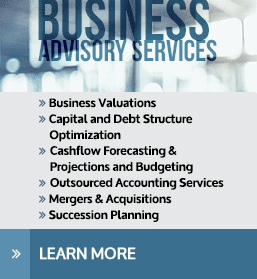Using a budget is a key component in driving your organization’s financial future. Estimating and matching expenses to revenue (real or anticipated) is important because it helps small business owners to determine whether they have enough money to fund operations, expand the business, and generate income for themselves. Without a budget or a plan, a business runs the risk of spending more money than it is taking in, or conversely, not spending enough money to grow the business and compete. Here are 10 tips to help your business build an effective one.
Tip 1: Know What a Budget Is
There are also different types of budgets. Some companies find it beneficial to budget on the accrual basis to estimate net income, while other companies focus on budgeting for cash flow.
Some organizations have two budgets to track both of these key financial performance measures. Regardless of which budget type you choose, everyone in your organization needs to be on the same page when it comes to the budget’s goals.
Tip 2: Define and Understand Your Risks and Check Industry Standards
Overall, it’s a good idea to identify the most substantial threats to productivity within your organization and their financial impact. Not all businesses are alike, but there are similarities within your industry.
It is important to understand the risks of your organization and its industry. For example, if you operate in an industry that is significantly seasonal in nature, you will likely need to break down an annual budget into a quarterly, or even monthly, approach.
Tip 3: Have the Right Budget Team
It should not be created by one person. Keep employees updated on your short- and long-term financial goals, as well as what they can do to help reach them. Some line items may need to be kept private, but the majority should be shared. We suggest listing your guaranteed income and expenses per month to understand your risks.
While we typically restrict budget creation to members of management, maybe it’s time to think outside of the box and involve other individuals who can bring fresh perspectives to the budgeting table.
Tip 4: Be Realistic
A budget isn’t truly effective if it’s designed toward a targeted number. Rather, you should develop your budget based on past results and future projections. Analyze financial results from up to five years ago as a starting point. What are some costs that are fixed and inevitable? Those can be entered first. Then you can look at accounts or line items that have fluctuated more drastically over the years. What caused this fluctuation? Were there one-time expenses? Can these fluctuations be controlled?
Tip 5: Be Conservative
As part of your budget, you should factor in some level of the unknown. There is always some unexpected element of a project. If we knew all of a project’s anticipated costs and factors, it wouldn’t be a project.
Make sure you consider the need to plan for future years. Economic downturns are inevitable, so in a strong economic year you should not only create a balanced budget but also start building up a cushion for the anticipated rainy days. If times are tight and money must be found somewhere in order to pay a crucial bill, advertise, or otherwise capitalize on an opportunity, consider cost-cutting. Specifically, take a look at items that can be controlled to a large degree. Another tip is to wait to make purchases until the start of a new billing cycle or to take full advantage of payment terms offered by suppliers and any creditors.
Tip 6: Be Flexible
It’s okay to amend your budget during the year; in fact, it should be amended several times throughout it. Revisiting your budget is a very healthy exercise for your organization’s well-being.
Tip 7: Be Detailed
The more detailed your trial balance is, the more effective your budget will be. For example, some organizations may be fine with a line item called “payroll.” But other organizations will want to break that down by division or employee position type. Similarly, instead of having a line item for “employee benefits,” it may be more beneficial to have a line item for each type of employee benefit (e.g., health insurance, retirement benefits, sick and vacation pay and tuition reimbursement).
Tip 8: Be Aware of Financial Relationships
Sometimes you can’t change just one line item in your budget. Sometimes you have to be careful changing one line item of your budget without analyzing that change’s effect on other line items.
Tip 9: Use the Right Tools
Most accounting software has a built-in budgeting tool, so if you’re frustrated with your Excel budget, take a step back and check whether your current software has a tool you could utilize to assist. This may lead to increased efficiency during your budgeting process.
Tip 10: Share It
An organization’s budget shouldn’t be a secret. While there are instances when some financial information should be kept to a limited group, organizations will find that increasing who the budget is shared with will lead to greater transparency, increased feedback and beneficial communication.
Need help creating a budget for your business? Contact Kelly at (320) 214-2959.



